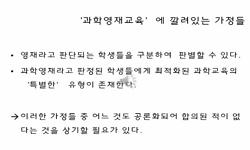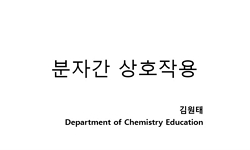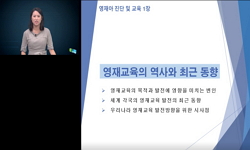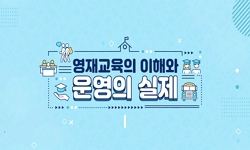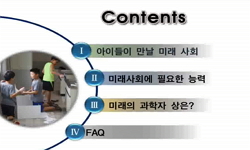본 연구의 목적은 수・과학영재와 발명영재의 융합인재교육(STEAM)에 대한 인 식을 비교 분석하고, 영재교육에서의 융합인재교육(STEAM) 방향을 제시하는 것이 다. 이를 위해 경기도 수․...
http://chineseinput.net/에서 pinyin(병음)방식으로 중국어를 변환할 수 있습니다.
변환된 중국어를 복사하여 사용하시면 됩니다.
- 中文 을 입력하시려면 zhongwen을 입력하시고 space를누르시면됩니다.
- 北京 을 입력하시려면 beijing을 입력하시고 space를 누르시면 됩니다.

융합인재교육(STEAM)에 대한 수・과학영재와 발명영재의 인식 차이 = Comparison of Perception Towards the STEAM Education for Mathematics/Science-Gifted Students and Invention-Gifted Students
한글로보기https://www.riss.kr/link?id=A105065355
- 저자
- 발행기관
- 학술지명
- 권호사항
-
발행연도
2015
-
작성언어
-
- 주제어
-
KDC
373
-
등재정보
KCI등재
-
자료형태
학술저널
-
수록면
1029-1049(21쪽)
- 제공처
-
0
상세조회 -
0
다운로드
부가정보
국문 초록 (Abstract)
본 연구의 목적은 수・과학영재와 발명영재의 융합인재교육(STEAM)에 대한 인 식을 비교 분석하고, 영재교육에서의 융합인재교육(STEAM) 방향을 제시하는 것이 다. 이를 위해 경기도 수․과학영재 및 발명영재 총 60명의 학생을 대상으로 설문조 사를 실시하였다. 연구결과는 다음과 같다. 첫째, 수・과학영재와 발명영재는 모두 인식과 필요성을 공감하고 있었다. 필요성에 대한 이유로는 수․과학영재들은 기존 의 내용이 아닌 새로운 과제를 통한 학습 동기 유발이 필요하다고 생각했으며, 발명 영재들은 다양한 과목의 융합으로 다양한 사고와 상상력 계발과 기존의 내용이 아 닌 신선하고 흥미로운 과제를 통해 학습 동기를 유발하기를 원하고, 미래 사회의 리 더가 될 수 있는 자질을 기르기 위해서라고 응답했다. 둘째, 현재 영재교육에서의 융합인재교육(STEAM) 실시 여부에 대해서는 발명영재는 실시하고 있다는 응답이 많았으나 수․과학영재는 받지 않는다고 응답하거나 잘 모르겠다고 응답한 경우가 많았다. 셋째, 융합인재교육(STEAM)에서 융합되고 있는 교과를 묻는 질문에는 발 명영재학급의 학생들과 수․과학영재는 모두 과학, 수학, 기술이라는 응답이 가장 많았으며, 발명영재는 과학, 수학, 기술 또는 과학, 수학, 기술, 예술로 양분된 반면 수학・과학 영재는 다른 과목을 제외하고 과학과 수학교과만이 융합되고 있다는 응 답도 존재했다. 넷째, 영재교육의 융합교육화(化)에 대해서는 수․과학영재와 발명 영재는 모두 한꺼번에 여러 가지를 융합하는 것에 대한 기대감과 함께 우려를 나타 내었다. 다섯째, 융합교육에 가장 적합한 주제는 수・과학영재와 발명영재들은 대부 분 로봇 등의 첨단기술을 꼽았으나, 수・과학영재는 자연재해, 식량문제, 윤리 및 도 덕성 등 다양한 분야에 응답했다. 여섯째, 융합교육의 발전을 위해 필요한 것에 대 해서는 수학․과학 영재들은 다양한 프로그램의 개발을, 발명영재는 다양한 도서 및 자료, 교구구비가 가장 필요하다는 의견을 보였다.
다국어 초록 (Multilingual Abstract)
The objective of this study was to investigate into the perception towards the STEAM education for mathematics/science-gifted students and invention-gifted students through comparative analysis and to present the direction for STEAM education for gift...
The objective of this study was to investigate into the perception towards the STEAM education for mathematics/science-gifted students and invention-gifted students through comparative analysis and to present the direction for STEAM education for gifted students. For that, 60 students of mathematics/science-gifted class and invention-gifted class at schools in Gyeonggi-do were surveyed. The results of this study suggested the followings: First, all students of mathematics/science-gifted class or invention-gifted class showed common perception and recognition. Particularly, the students of invention-gifted class showed higher rate of response to the need for STEAM education, compared to the students of mathematics/science-gifted class. In relation to the need for STEAM education, the students of mathematics/science-gifted class perceived the need for learning motivation through new tasks, not the conventional learning contents. Meanwhile, the students of invention-gifted class exhibited the desire to have the learning motivation stimulated through novel and interesting tasks, rather than conventional learning contents, along with the development of various thinking perspectives and imagination based on the convergence of many different subjects, and answered that they pursued such direction to build up capabilities to transform themselves into the leaders of future society. Second, a large proportion of respondents answered that the STEAM education was provided in the invention-gifted class under the current gifted education. However, the students who indicated that STEAM education was implemented turned out to be outnumbered by the students who answered that STEAM education was not provided in invention-gifted class or the students who answered that they were not sure. Third, students of both invention-gifted class and mathematics/science-gifted class answered that the subjects of science, mathematics, and engineering were the primary targets of convergence when they were asked to indicate the subjects that were converged in STEAM education. The students of invention-gifted class were split into one group that answered that the science, mathematics, and engineering were the major subjects of convergence and the other group that answered that the science, mathematics, engineering, and art were the primary subjects of convergence. By contrast, some students of mathematics/science gifted class indicated that only the science and mathematics were converged in STEAM education. Fourth, some students expressed concern, along with the anticipation, in relation to the convergence of many things altogether at a time in the convergence education for the gifted students. Fifth, most students of mathematics/science-gifted class and invention-gifted class singled out the state-of-art or cutting-edge technologies, such as robotics, etc., as the subject most ideal for the convergence education. However, the students of mathematics/science-gifted class pointed to various fields such as natural disasters, food crisis, ethics and morality, etc. Six, in relation to what were needed to spur the development the convergence education, the students of mathematics/science gifted class indicated that the development of various programs was the most urgently required while the students of invention-gifted students answered that various books, materials, and education tools were the most urgent requirements.
목차 (Table of Contents)
- Ⅰ. 서 론
- Ⅱ. 연구 방법
- Ⅲ. 연구 결과
- Ⅴ. 결론 및 제언
- 참고문헌
- Ⅰ. 서 론
- Ⅱ. 연구 방법
- Ⅲ. 연구 결과
- Ⅴ. 결론 및 제언
- 참고문헌
동일학술지(권/호) 다른 논문
-
초등 체육에서 스포츠 영화를 활용한 경쟁 활동 수업하기
- 학습자중심교과교육학회
- 배종희(Bae Jong Hee)
- 2015
- KCI등재
-
초등 과학 영재의 창의적 문제 해결력 향상을 위한 과학사-CPS 수업 모형 기반 날씨 영역 수업 프로그램 개발과 적용 효과
- 학습자중심교과교육학회
- 김석기(Kim Suk ki)
- 2015
- KCI등재
-
초등특수교사가 국어 수업을 하며 겪은 경험과 인식을 통해 바라본 특수학급 수업의 구조적 상황
- 학습자중심교과교육학회
- 박정옥(Park Jeong Og)
- 2015
- KCI등재
-
생명과학 디지털 콘텐츠에 대한 고등학생의 시각적 주의집중 분석
- 학습자중심교과교육학회
- 김윤영(Kim Youn Young)
- 2015
- KCI등재




 스콜라
스콜라